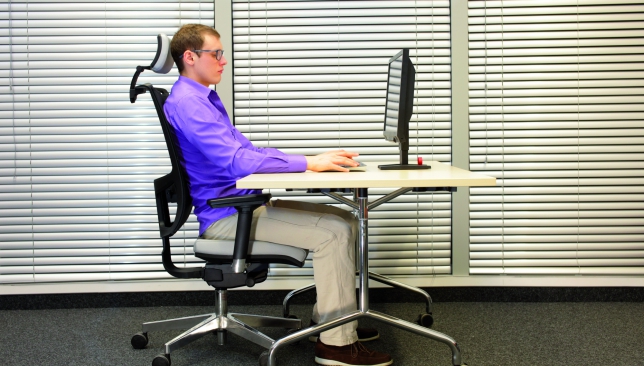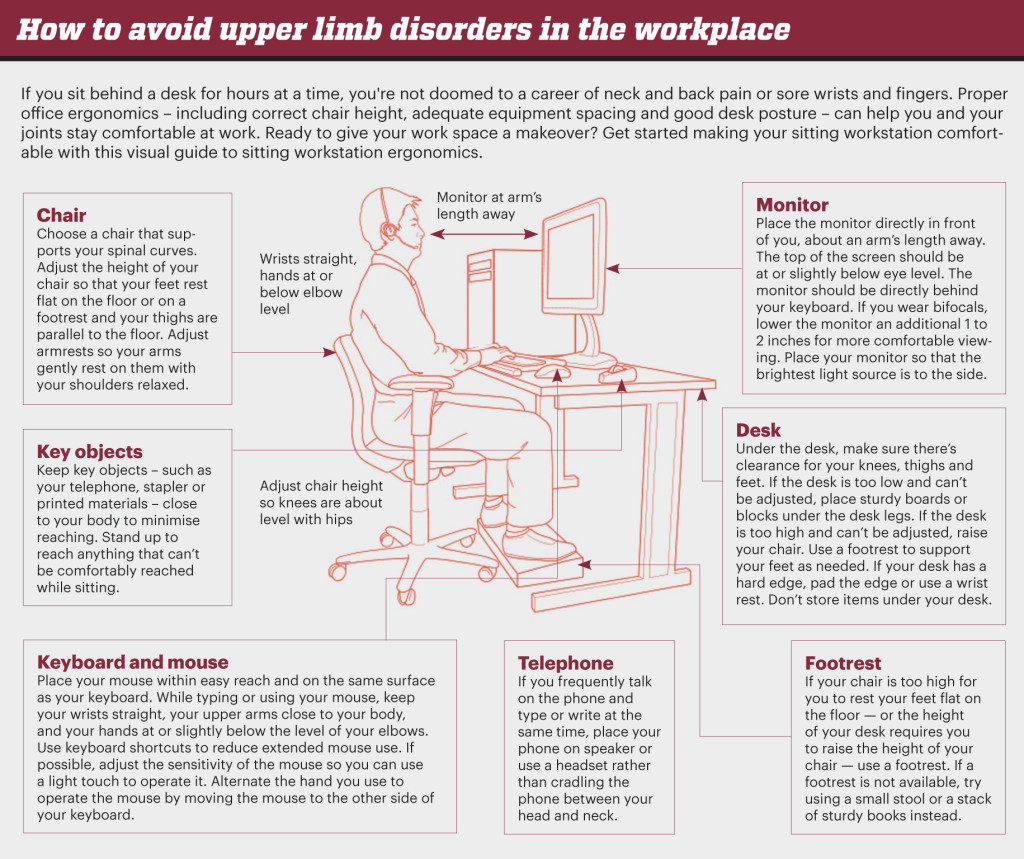
According to the definition provided by the World Health Organisation (WHO), an occupational injury is any which are contracted primarily as a result of an exposure to risk factors that arise from work activity.
In years gone past those work-related injuries may have been caused by working with machines, operating vehicles, or falling from heights. But with the rise of office-based employment a more insidious form of occupational injuries have begun to emerge: Repetitive Motion Injuries (RMI).
RMIs may be one of the less obvious workplace hazards but it is one of the most harmful in the long run.
Repetitive motions such as typing and using the computer 24/7 can strain muscles and tendons causing back pain, vision problems, and carpal tunnel syndrome – especially in the UAE where long working hours are common.
But employee training and the use of proper ergonomic equipment can help keep these incidents low.
One particular brand of RMIs currently of concern in the workplace are upper limb disorders (ULD) – a particular group of musculoskeletal ailments affecting the shoulder, neck, elbow, forearm, wrist, hand and fingers.
This includes problems with soft tissue, muscles, tendons and ligaments as well as the blood circulation or nerve supply to the upper limb. If untreated, and continually aggravated, these aches can develop into upper limb disorders.
It is now accepted that these upper limb disorders can occur without having carried out repetitive activities. In fact, while some upper limb disorders have an exact diagnosis, the cause and treatment of some upper limb pains can be more difficult to identify.
This is why posture in the work place is so vital as is the correct placement of chair, table and even screen. Wrong postures can often lead to you becoming susceptible to such disorders.
For example, the wrist works best when the hand and arm are particularly in a straight line. If it is twisted, rotated or bent this will increase the strain on the tendons and nerves which pass through the wrist to the hand.
Another factor is the force or tension which is created in nerves and tendons. Directly applying a force, particularly in activities that rotate the arm or wrist (e.g. folding boxes or twisting wires) can also trigger ULDs. Additionally, it also depends on how long a force is applied or how often the action is carried out.
“With sedentary lifestyles and maximum hours being spent at the workplace, there has been an increase in work-related musculoskeletal disorders of the upper limbs or ULDs” explains Dr Bhuvaneshwar Machani, consultant orthopedic surgeon at Burjeel Hospital.
“Physical work factors, psychosocial and environmental factors and individual characteristics affect work-related upper limb disorders.
“These disorders are not confined to particular jobs or sectors. Upper limb disorders include aches and pains in any part of the body from the shoulder to the fingers and can include problems with soft tissue, muscles, tendons and ligaments as well as the blood circulation or nerve supply.

How to avoid upper limb disorders.
“Pain however is a common symptom of ULDs but the experience of pain in the upper limb is also common amongst the general population. Therefore, feeling pain in the upper limb is not in itself an indication of the presence of an ULD, and such symptoms may be difficult to attribute to work with any certainty.”
Common types of work related upper limb disorders include enosynovitis in the wrist, hand or shoulder, carpal tunnel syndrome (pressure on the median nerve in the wrist), cubital tunnel syndrome (ulna nerve compression in the elbow) epicondylitis (tennis or golfers elbow), cervicalgia (neck pain) and some non-specific fore arm pain and restless hand.
“I sincerely believe that employers/management should actively be involved in minimising the risks of ULDs through a positive management approach,” continues Dr Machani.
“They must have an understanding of ULDs and should be committed towards its prevention.
Organisations should educate their employees on the common ULDs, their possible risks and how to combat them.
“Strong focus should be put on introducing workplace training around ULDs, assessing the posture of employees as they work and encouraging early reporting of symptoms.
“Employees who have symptoms that suggest a ULD should seek medical advice and report any symptoms to their employer as soon as possible as an early intervention and treatment is the best way to avoid long-term problems.”